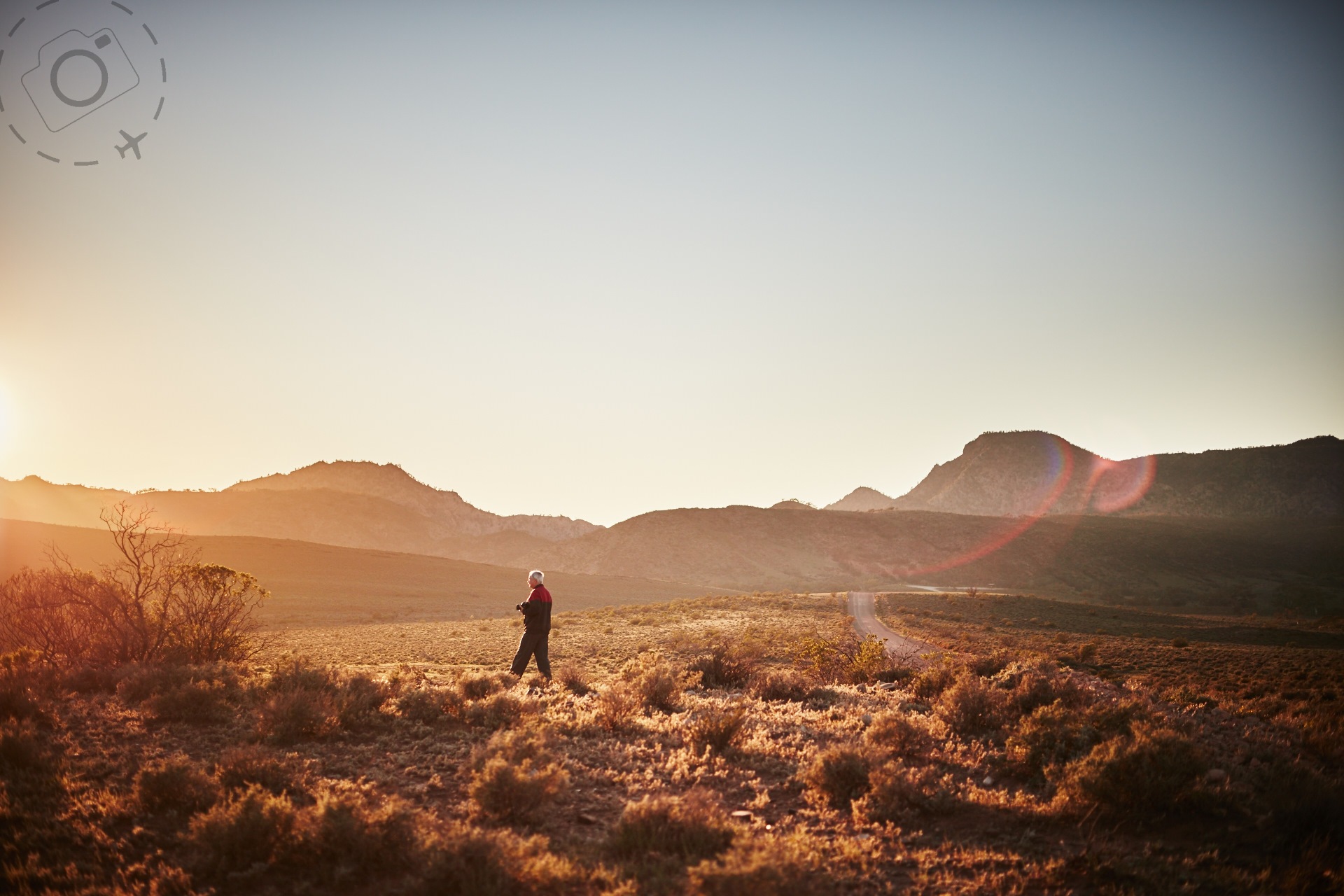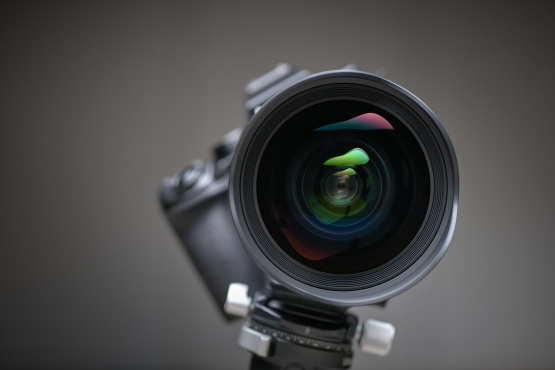You may have heard that buying a bigger camera with a bigger sensor will give you a better quality image. Not all cameras are made equal and sensor size really does effect the high mark for quality you can achieve with your images. Swapping from an entry-level DSLR, with an APS-C sized sensor, to a full-frame model is usually an expensive exercise, let alone if you step up another notch and head for the medum format option.
Tight not Bright
Counting pixels wont always tell you much about the quality of a camera, and there's a limit to the number of useful pixels depending on the lens system you're shooting with. The more pixels you pack into a sensor the less light each of one them is getting. It's simple physics but it presents a massive challenge to those engineers back in Japan who make the magic happen.
All sorts of clever adaptations to the microscopic elements and digital signal are employed to reduce the problem, but you can usually expect a sensor with fewer megapixels to offer better performance at high ISO or long exposures.
Noise is not the only aspect of quality that pixel size can impact. Better dynamic range and colour tones are possible with larger pixels too. Light entering your lens is effectively a process of feeding data to the sensor, and the more data your sensor has to play with the better rendition it can make.
Compare the 12MP Nikon D700 to the 24MP D3x, with the junior model feeding twice the light to each pixel than the top-shelf version. Each individual pixel on the D3x has to work twice as hard to get the same result, which mean the engineering effort behind the D3x is substantially more demanding. Little wonder the price tag on the D3x is many times higher.
Shallow Airyness
The bigger the sensor the more shallow your depth of field. An aperture of f/3.5 on an APS-C sized sensor like the Canon 7D looks very different to f/3.5 on a medium format system such as the Hasselblad H4D. The physical sensor size of the Hasselblad covers 4 times the surface area of the Canon 7D, and in effect you're getting 1/4 of the depth of field.
For many photographers the dramatic effect of shallow focus is very desirable, a powerful tool for composition to draw attention to your subject. The bigger the sensor the greater emphasis you can achieve using restricted depth of field.
At the opposite end of the scale you might want to reach for greater depth of field, and that becomes more of a challenge if you're shooting on a larger format. Landscape photographers shooting on medium format gear often push their aperture out to f/22 or higher in order to get deeper focus. It's at this point that mathematics start to get in the way of good photography, because f/22 doesn't look so good on DSLR cameras with a smaller sensor.
The problem is known as the diffraction limit, and the smaller the lens system the sooner you hit that limit. As you step up the f-stops and start shooting with narrow apertures the physical size of that aperture starts to look more and more like a pinhole. An image passing through a very narrow aperture reveals the unique character of light in the form of Airy Discs, a small pattern of halos around each point of light that creates a faint echo of the image.
The unusual behaviour of Airy Discs generates an increasingly defocused appearance to the image, and you're effectively hitting the limits of optical resolution. The finer the aperture the less sharp your images will be. For most DSLR systems you can expect the quality of image to start declining around f/13.
Seeing is Believing
You might be wondering why camera manufacturers would design lenses for SLR cameras that range all the way to f/32 if they wont look their best beyond f/13? Not every lens is designed to look perfect across the full range of zoom or apertures, but older lenses especially were rarely placed under the kind of scrutiny that a modern 24MP sensor can achieve. In essence, lesser quality lenses may not look very sharp at f/5.6, so a little diffraction happening at f/32 wont always be so noticable.
You can't easily spot the diffraction limit of a lens when other flaws in the glass are reducing the resolving power of the lens anyway.
The effect of Airy Discs become far easier to spot when you shoot with a very fast lens and compare the sharpness wide open up against the extremely narrow apertures. The lens geometry for partial frame SLR cameras (like the Sony Alpha 77) is very similar if not identical to the full-frame DSLR gear (like the Nikon D3x) but the smaller sensor in the Sony effectively magnifies the effects of diffraction.
We took the new 16-50mm f/2.8 lens by Sony and tested the same scene on a bright and sunny day at f2.8 and f/13 to see if there was any difference. Side by side the comparison was very clear - we saw superb levels of detail and crispness to the f/2.8 image, at least within the limited range of the focal plane, but noticed an obvious defocused appearance to the f/13 version. This lens is good enough to reveal the limits of the physics behind DSLR photography.
The notion of focus and sharpness are relative rather than absolute. You don't step from f/5.6 to f/6.3 and suddenly get blury images. Cameras still operate in the analogue world where each step through the aperature size leads to a small variation in the effect of Airy Discs. At what point you decide the diffraction effect is delitarious to your image quality is really up to you, but it helps to understand that the bigger the sensor then the bigger the f-stop you can dial up before diffraction gets in the way.
Resolved at Last
The problem of narrow apertures and Airy Discs has implications for pixel counts as well, in particular for smaller sensor formats. The more pixels you stuff into a digital sensor the quicker your sensor outstrips the ability of the lens to provide a sharp image. Each time you increase the density of pixels on the sensor the effective 'diffraction limit' is reduced.
Technical estimates of where the diffraction limit lies for a given camera system are brilliant fodder for online forums where bored geeks can hurl insults and figures at each other all day. The absolute figures are not critical, but the relative numbers are.
Some technical assessments rate DSLR lenses at f/8 to be within the diffraction limits for a 15MP APS-C sensor, or alternately 22MP for a full-frame DSLR sensor. That means that as you dial apertures above f/8 you're passing the ability of the lens to match the sensor. In the reverse direction, if you have an APS-C sized sensor such as that of the Sony A77, with 24million densly packed pixels, you're effectively restricted to f/3.5 before you exceed the resolution ability of the lens.
A third and final way to express these constraints is to conclude that if you want to shoot images at f/8, where most lenses perform their very best, you need to have about 15MP or less on an APS-C sized sensor or 22MP or less on a full-frame sensor. And if you want to capture beyond 22MP then it's highly advised that you buy a medium format system.
Scale of Presentation
The resolving power of your lens versus the sensor is largely an issue for presenting large images. Printing a photograph at 30 inches wide will reveal flaws in your images that may not be obvious when viewing on your desktop screen. Size matters when printing. Even printing an albumn of images with Blurb or another on-demand online service may not reveal the restrictions on your resolution. Affordbale print services are usually pretty low on print resolution themselves.
The most convincing way to evaluate the quality of your camera and lens combination is to print yourself some really large photos. A 20x32 inch print should cost around $30 and you'll be left in no doubt about the strengths and weakness inherent with your photographic equipment.
There is a genuine difference between 24MP of image from a Sony A77 compared to 24MP on a Nikon D3x or 22MP from a Mamiya 645DF. It's a credit to the engineers in Japan that such high standard of images can be captured on the APS-C sized sensors, but there are limits to what we can hope for in the future. Simply packing more pixels into these little sensors wont make them equal to the bigger camera systems, but for a fraction of the price neither should we expect them too.
The Next Step
Putting better lenses in front of the small sensors does help the equation, provided you're shooting inside the diffraction limits of that lens. Shoot with small f-stops for big resolution. The hurdle to better images at this point is not technology, but physics. Size matters and you need a physically wider aperture to achieve sharper resolution. The easiest way to engineer better optical resolution is with a bigger camera format.
This is why Canon have designed their latest professional camera with a modest 18MP full-frame sensor. The design emphasis is to maximise the resolving ability of the sensor when matched with Canon's best lens technology. The market for their new 1Dx are people who spend more on lenses than cameras, and professional photographers will be able to decide for themselves whether these 18MP files are more appealing than having more pixels at the expense of noise and diffraction.
If Canon really want to build a better DSLR they know it means building a whole new format and lenses to match. That's precisely what Leica have done when they released the S2.
Instead of just releasing another Medium Format camera into a market crammed with long established brands, they developed a whole new camera system. Think of the S2 as a DSLR with a double sized sensor, and hence expect from it double the image quality. Leica built a new range of lenses that are optimised for the large sensor, finely tuned for the demands of digital technology and physically large enough to shoot at high f-stop without hitting the diffraction limit.
Conclusion
There is a finite limit to image quality based on the size of your camera sensor, and adding more pixels into the same physical size chip may actually degrade aspects of your image. The number one reason to upgrade your camera to a larger sensor size is to access better quality pixels rather than bigger files. Depth of field physically decreases as you scale up the lens system as well, which might be good or bad depending on your photographic style. Buying a better lens for your existing camera can help you stay inside the diffraction limit and make the most of your sensor.

Keep Reading
Join Ewen's newsletter for monthly updates on new photography articles and tour offers...Subscribe Here










